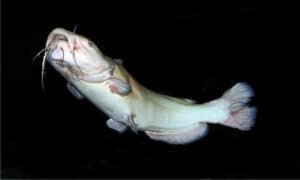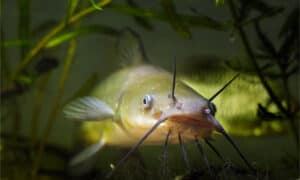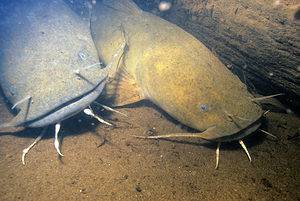The flathead catfish derived its name from its flat head. However, except for their oddly shaped heads, they look similar to any other species of catfish.
For example, they have scaleless, smooth skin, whisker-like barbels, and long spines on each side of their pectoral and dorsal fins.
Furthermore, flathead catfishes can reach lengths of 3 to 4 feet and can weigh over 100 pounds. But how big was the largest flathead catfish ever caught in Mississippi?
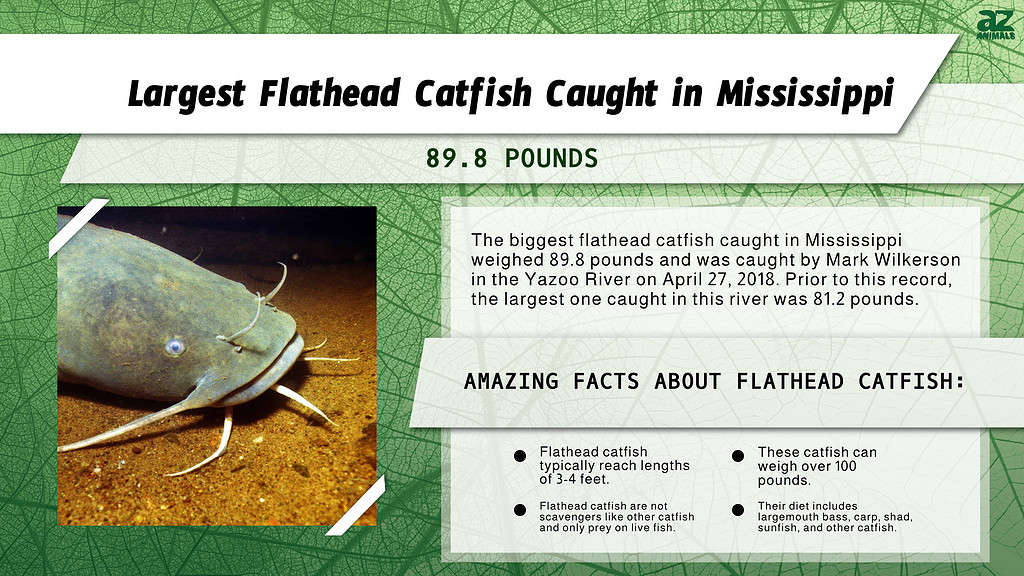
Flathead Catfish Overview

Flathead catfish differ from other catfish species because they are not scavengers; they only prey on live fish.
©Rob Hainer/Shutterstock.com
Their scientific name is Pylodictis olivaris, which is Greek for olive-colored mudfish. These catfish are generally pale yellow to light brown on their sides and back and are mottled with brown, black, or both. In addition, their bellies are typically cream or pale yellow. They have a projecting lower jaw and broad, flat head, with a slightly notched tail fin, unlike blue or channel catfish with a deeply forked tail. Juveniles are very dark, nearly black in appearance.
Flathead catfish differ from other catfish species because they are not scavengers; they only prey on live fish. Juveniles feed primarily on invertebrates like insects, crayfish, and worms. However, once they grow over 10 inches long, their diet changes to fish like largemouth bass, carp, shad, sunfish, and other catfish species, including their own.
The Largest Flathead Catfish Ever Caught in Mississippi
Mark Wilkerson caught the largest flathead catfish in Mississippi on April 27, 2018. This massive 89.8-pound specimen was caught in the Yazoo River in Mississippi.
This river basin drains an area of over 13,000 square miles. Its extensive basin spans over 200 miles and covers parts of 30 counties. The headwaters originate from the Tennessee state line with the Coldwater River. It strengthens and broadens from numerous tributaries until it merges with the Mississippi River north of Vicksburg. As a result, the rivers and streams feeding the Yazoo River create a massive ecosystem with some of the best catfishing spots in Mississippi.
Before Mark Wilkerson caught his massive prize, the largest flathead catfish ever caught from the Yazoo River in Mississippi weighed 81.2 pounds. Toby Lawrence from Oxford caught it in the Coldwater River in July 2012. The most popular fishing methods in the Yazoo River are tightening, trot lining, and jug fishing. However, hand grabbing is fast gaining in popularity.
Where Is Yazoo River Located on a Map?
Yazoo River’s waters run in Mississippi and Louisiana. The river, which is 188 miles in length, is formed by the confluence of the Tallahatchie and the Yalobusha rivers, where the modern-day city of Greenwood was developed. Some consider it to designate the southern boundary of what’s known as the Mississippi Delta, a floodplain used for cotton plantations prior to the Civil War.
The Largest Flathead Catfish Ever Caught in the World
The largest flathead catfish ever caught in the world was by Ken Paulie, who caught a massive 123-pound flathead while fishing at Elk City Reservoir in Kansas on May 19, 1998. It measured an incredible 61 inches long and had a circumference of 43 ¾ inches. With such a high catfish population in the Midwest section of North America, it doesn’t come as a shock that the largest flathead catfish ever caught happened here.
Where Is Elk City Reservoir Located on a Map?
Situated 7 miles east of Elk City, Kansas, the Elk City Reservoir is a man-made lake created by the U.S. Army Corps of Engineers. Spanning approximately 4,500 acres of water and encompassing 12,000 acres of wildlife-rich surroundings, this reservoir boasts more than 50 miles of picturesque shoreline.
Best Places for Catfish Fishing in Mississippi
If you are looking to catch yourself a flathead catfish in Mississippi, there are a few spots to be aware of.
Lakes
There are several lakes in the Hospitality State that are perfect locations for flathead catfish fishing.
Grenada Lake
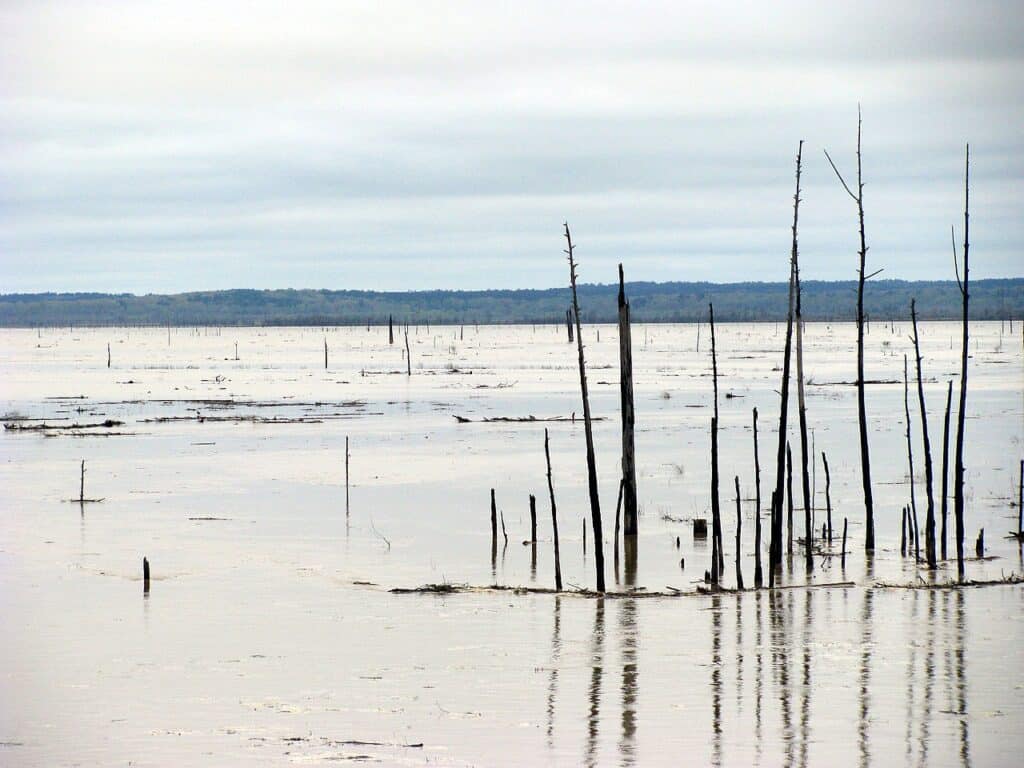
The north end of Grenada Lake is a hotspot for catfish, with many specimens weighing over 40 pounds.
©NatalieMaynor from Jackson, Mississippi, USA / Creative Commons – License
While Grenada Lake is well-known for its trophy-sized crappies, it also plays host to many large flathead catfish, which thrive amongst the dead stumps and trees that litter the bottom of the lake. Additionally, the north end of this lake is a hotspot for catfish, with many specimens weighing over 40 pounds. They are often caught from a watershed situated between Memphis and Jackson.
Ross Barnett Reservoir
This 33,000-acre reservoir lies in central Mississippi and serves as the state’s primary source of drinking water. Additionally, it is occupied by many species of large catfish. Flathead, channel, and blue catfish call Ross Barnett Reservoir home.
Sardis Lake
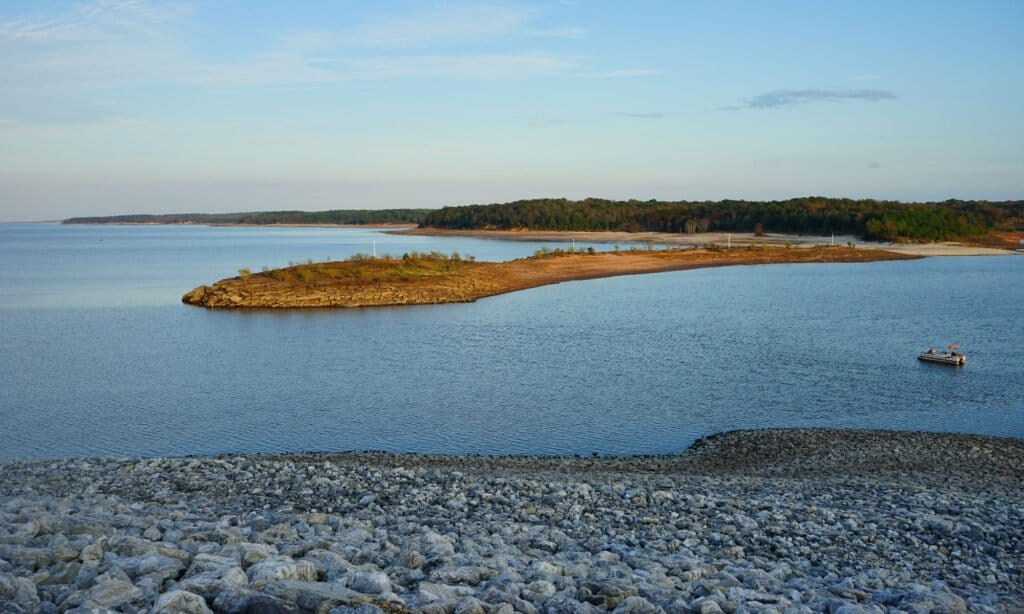
The best time to go fishing in Sardis Lake is after heavy rainfall.
©Feng Cheng/Shutterstock.com
Sardis Lake is a 98,500-acre lake in northwestern Mississippi. Stumps, fallen trees, and grass beds are submerged in its depths, making it a paradise for catfish. The best time to go fishing in Sardis Lake is after heavy rainfall. There is an abundance of catfish in this lake due to the many creeks, cutoffs, and ditches that line the shore, making it appealing to bait fish. As a result, catfish lurk around the mouths to benefit from the high food supply.
Arkabutla Lake
The Arkabutla Lake is a 33,000-acre lake in northwestern Mississippi known for its abundance of crappie. However, it is also home to a substantial catfish population. Arkabutla is a crescent-shaped lake surrounded by creeks and cutoffs. There are two catfish species in this lake: the blue and channel catfish. Most catfish in this lake prefer lurking in the shallow flats, where anglers have been catching them. In fact, the largest catfish recorded in this lake weighed a whopping 81.2 pounds! These fish thrive in Arkabutla Lake due to all the strewn piles of brush and submerged stumps.
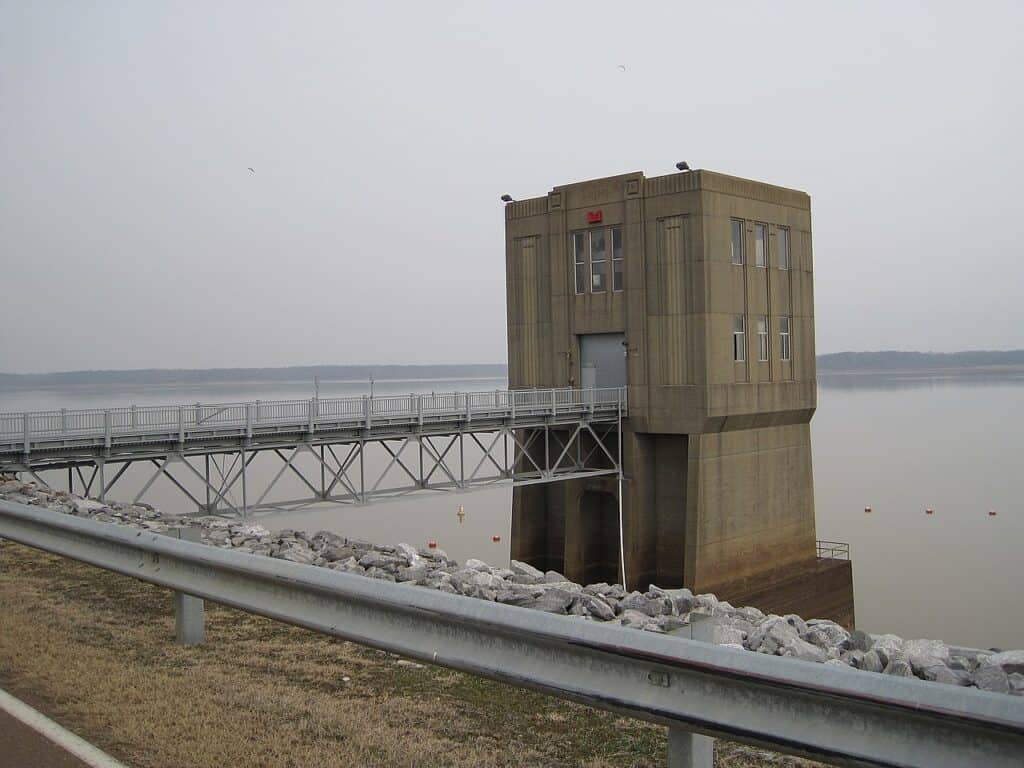
Arkabutla Lake and Dam are located in DeSoto and Tate counties in Mississippi.
©Thomas R Machnitzki / Creative Commons – License
Enid Lake
Located in northwestern Mississippi, Enid Lake spans more than 6,100 acres and holds the crappie world record and state record for gar. The bottom of this lake is littered with submerged trees, stumps, and grass beds, making it the perfect host for channel catfish.
Pickwick Lake
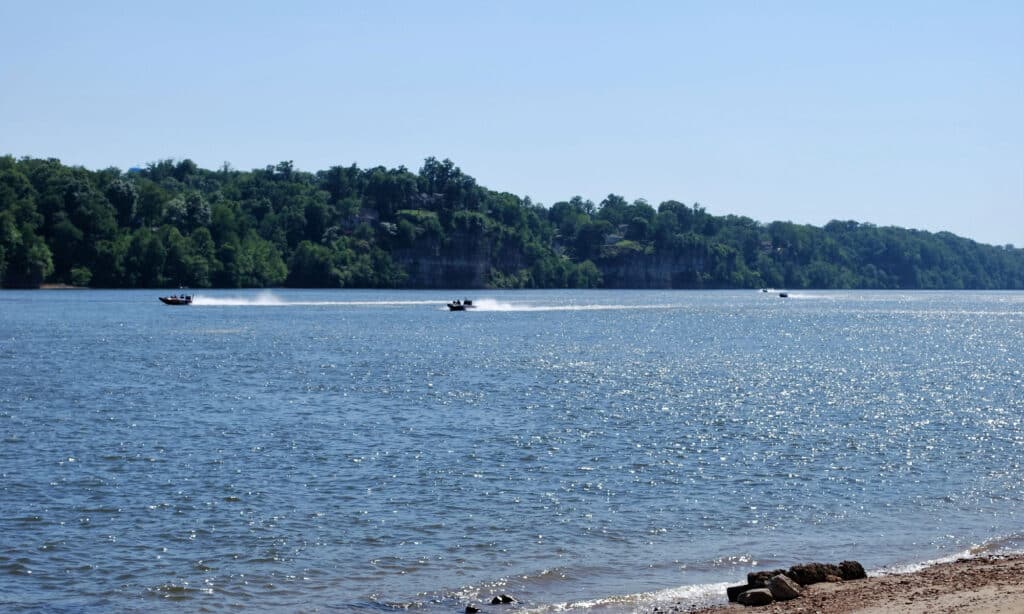
While Pickwick Lake is not known for its catfish, it is one of the state’s best places for large catfish.
©unageo09/Shutterstock.com
This 43,000-acre lake intersects Mississippi, Tennessee, and Alabama and is a popular site for trophy bass and crappie. While Pickwick Lake is not known for its catfish, it is one of the state’s best places for large catfish. This lake offers submerged trees, deep water, brush piles, and plenty of prey, like crawfish, minnows, and shad.
Lake Washington
While Lake Washington is only 500 acres, it is a piece of heaven for catfish. Located in northwestern Mississippi, this oxbow lake has a diverse environment thanks to all the duckweed, sand bars, and standing cypress trees. It is the perfect habitat for catfish, which are active all year round. While there are many worms, shad, and minnows available at Lake Washington, stink bait provides the best results when catching catfish.
Okhissa Lake
This lake is not well-known, but it’s a 500-acre body of water just outside Bude. Okhissa Lake is most popular for sunfish and bluegill fishing, but it is also an excellent spot for channel catfish. It is perfect for these catfish because of all the offshoots and coves spread over its shorelines, providing shallow waters where catfish live to hide. However, Okhissa Lake does not house trophy catfish. The channel catfish in this lake generally measure between 2 to 5 pounds.
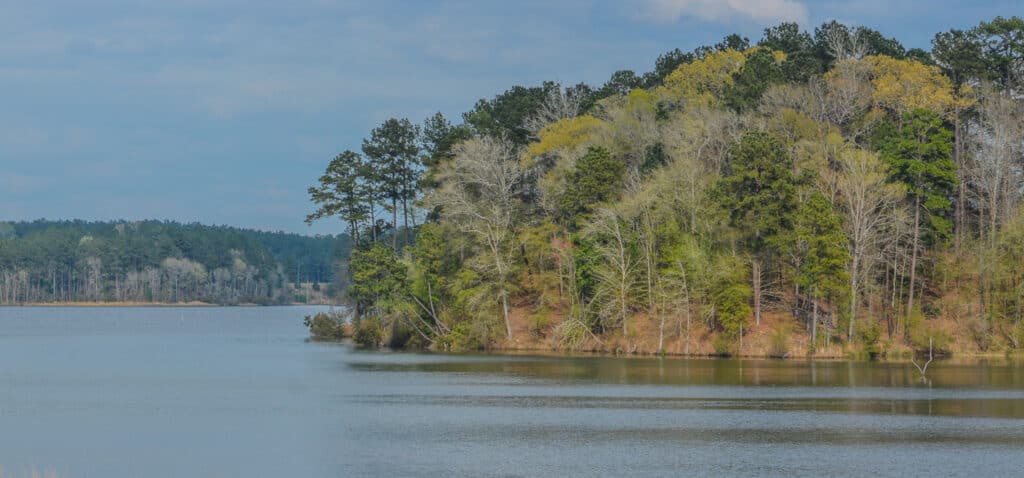
Okhissa Lake is in Mississippi’s Homochitto National Forest.
©iStock.com/Norm Lane
Lake Bogue Homa
The Lake Bogue Homa is an 882-acre lake in southeast Mississippi teeming with trophy-sized channel catfish. Most of the channels caught in this lake have weighed more than 8 pounds. Therefore, the best bait to use is cut bait. There is a lot of structure and dropoffs near the shore, so bank fishing is popular here.
Tunica Lake
When fishing for blue cats during winter, Tunica Lake is a good option. This oxbow lake lies off the main Mississippi River channel. It borders Arkansas, Mississippi, and just south of Tennessee. Although this lake is abundant in flathead and channel catfish, it consistently delivers large catches of blue catfish, usually 12 pounds or more. Anglers from the surrounding states return yearly during the colder months.
Bay Springs Lake
This lake is a 6,700-acre body of water in northern Mississippi that provides a variety of fish species, including massive blue and flathead catfish. However, it is famed for bass fishing.
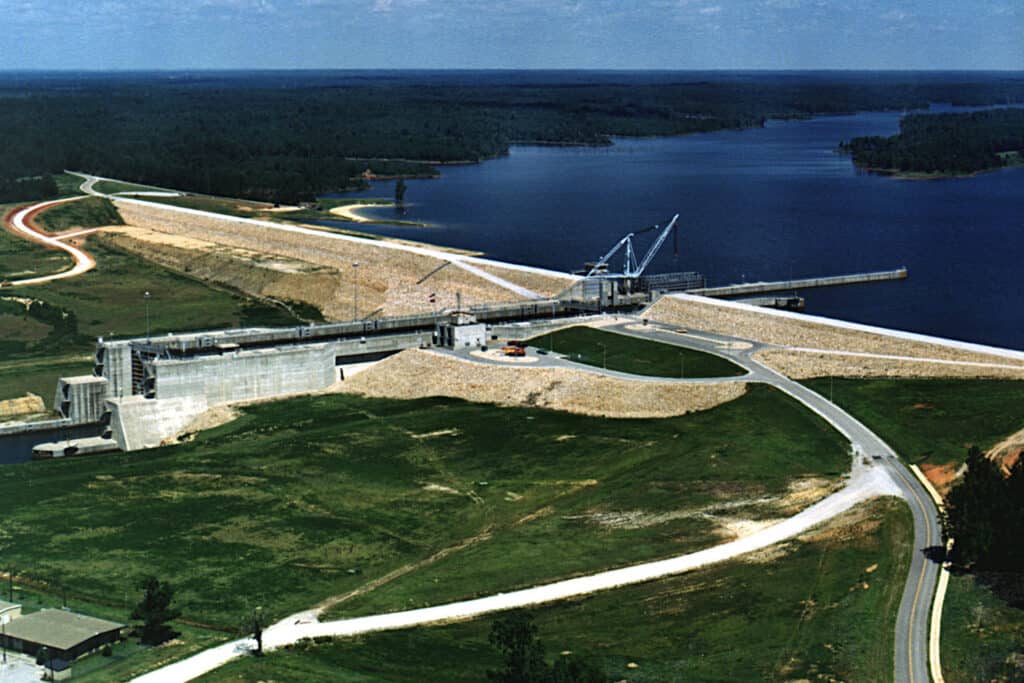
The Jamie Whitten Lock and Dam is on the Tennessee-Tombigbee Waterway in Mississippi.
©Adrien Lamarre, U.S. Army Corps of Engineers / public domain – License
The photo featured at the top of this post is © iStock.com/stammphoto
Thank you for reading! Have some feedback for us? Contact the AZ Animals editorial team.



